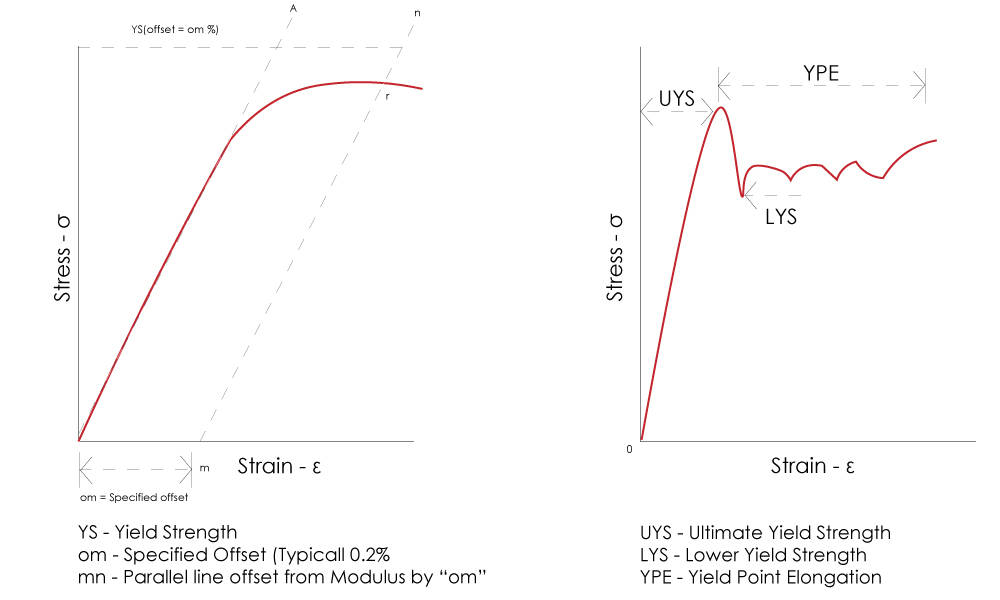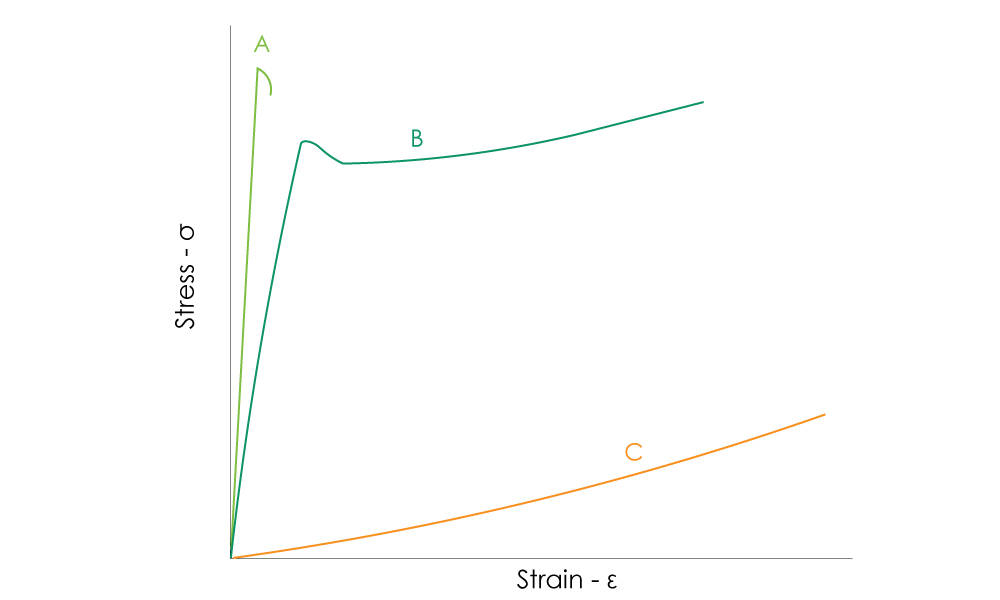Ponto de rendimento
O ponto de escoamento de um material é uma propriedade mecânica comumente medida durante os testes de materiais. O ponto de escoamento de um material ocorre quando o material faz a transição do comportamento elástico - em que a remoção da carga aplicada fará com que o material retorne à sua forma original - para o comportamento plástico, em que a deformação é permanente. Em uma curva de tensão/deformação, a região elástica é geralmente representada como a parte da curva com uma inclinação constante.
O rendimento pode ser medido de várias maneiras diferentes, dependendo do tipo de material e do tipo de teste que está sendo realizado(tensão, compressão etc.). Os resultados mais importantes da medição do rendimento são a resistência ao escoamento e a tensão de escoamento, pois esses valores são frequentemente usados para avaliar se um material é ou não apropriado para uma determinada aplicação. O limite de escoamento é particularmente importante, pois é necessário para determinar se um material atende a um fator de segurança (FoS) exigido. Por exemplo, se um engenheiro estiver procurando um material para ser usado em cabos de elevadores, é padrão exigir um FoS de pelo menos 10, o que garante que o cabo resistirá a dez vezes a tensão máxima aplicada. O FoS é determinado pela divisão da resistência ao escoamento pela tensão máxima aplicada efetiva do cabo.
O cálculo do rendimento é particularmente importante ao testar metais. O rendimento em metais é normalmente calculado usando o método de rendimento de deslocamento, em que uma linha é traçada paralelamente ao módulo e deslocada por uma quantidade predeterminada (o deslocamento é expresso como uma porcentagem e é determinado pela norma ASTM ou ISO que está sendo usada). Para metais, o rendimento é geralmente calculado com um deslocamento de 2%. Nesse caso, o ponto de escoamento é definido como sendo o ponto de interseção entre a linha de deslocamento e a curva de tensão/deformação. Isso só é verdadeiro para metais que apresentam escoamento contínuo, em vez de escoamento descontínuo, um fenômeno que ocorre em determinadas ligas devido ao escoamento localizado.

Nem todos os materiais apresentam rendimento. Os compostos e as cerâmicas falham em deformações muito baixas sem apresentar escoamento. Plásticos e elastômeros podem apresentar muitos tipos diferentes de curvas de tensão-deformação, mas a maioria se enquadra em uma das três categorias, sendo que apenas uma delas apresenta um ponto de escoamento verdadeiro e mensurável.

R: Um material frágil que se quebra sem ceder, como um material plástico preenchido.
B: Um material que exibe uma curva de inclinação zero, como muitos termoplásticos.
C: um material elastomérico que aumentará lentamente a carga aplicada até a falha, como a borracha de silicone.

Série 3400 – Soluções de teste acessíveis
Sistemas de teste universal Instron série 3400 para testes de tração, compressão, curvatura e outros testes de propriedades de materiais.

6800 Series Premier Testing Systems Brochure
Instron 6800 Series Universal Testing Systems provide unparalleled accuracy and reliability. Built on a patent-pending Operator Protect system architecture with an all-new Smart-Close Air Kit and Collision Mitigation features, the 6800 Series makes materials testing simpler, smarter, and safer than ever before.